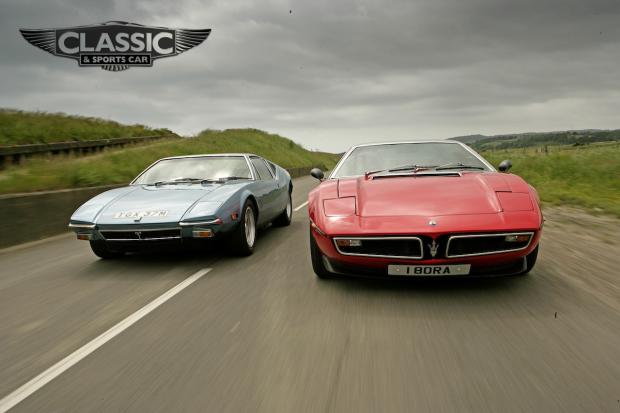
Motoring watersheds don’t come much grander than the mid-engined road car revolution. De Tomaso has form, of course, the Vallelunga kick-starting the goldrush in 1963 and the Mangusta later bringing the power to complement the looks and the potential. By the late 1960s and dawn of the ’70s, though, Lamborghini had stolen De Tomaso’s thunder – and its sales – with the Miura. The word ‘supercar’ had been coined and the new genre already had its pin-up. It was time for Alejandro – and everyone else – to fight back. Even Ferrari, which still talked a good fight with the Daytona, knew the end was nigh for long-bonneted brute force having already filtered the V6 mid-engined Dino into the fold.
Of course, few apart from Lamborghini were insane enough at the outset to lob a transversely mounted V12 in the spot where you would traditionally have your umbrella lolling around, but V8s were a natural fit for a new type of motor. Most of the new breed came without quite the outright top speed to catapult the cars into the lofty strata of Top Trumps champions (the Miura’s claimed 180mph still ruled there). These cars compromised those headline-grabbing figures in return for usability and handling, a formula that considered a mere 160-170mph as plenty, and that drivers should be able to speak to their passengers without using headphones.

The glut of new cars usually flaunted their exoticism with vowel-laden Italian names, the two most intriguing and most akin to each other being the De Tomaso Pantera and the Maserati Bora. One an out-and-out hybrid, the other a virtual hybrid (by way of Citroën takeover), this pairing shares layout, V8 usage, ZF transaxle, Campagnolo alloys, market values today (roughly) and, stationary at least, demeanour. Coming from completely different angles, but offering extremely similar performance figures, these were two very serious and genuine rivals to Lamborghini’s hegemony, but at much more tempting prices. In the UK in 1973, a Pantera GTS like this could be yours for £7875 and a Bora would set you back £9831, while even in the previous year the outgoing Miura was a heady £10,250. And in ’73 it would be followed by the Countach at an eye-watering £16,314.












